Have you ever wondered how your ATV’s suspension works? Do you need to adjust or lower your ATV suspension but do not know how? Knowing how your ATV suspension works and how to adjust it is important, as it will allow you to enjoy better quality rides.
ATV suspension works by helping the quad stay stable on tough terrain. Shocks and springs help resist rapid compression and unstable bouncing. You can adjust the preload, rebound, and compression of your shocks to make your rider softer or stiffer and raise your ride height.
In this article, you will learn how your ATV suspension works. I will also show you how to adjust, lower, and soften it. Let us get started.
An ATV suspension helps your ATV vehicle get over rough terrain. Unlike a regular car’s suspension designed for pavement and flat roads, an ATV suspension is designed to help you drive off-road.
When driving off-road, you will encounter ruts, bumps, rocks, ditches, logs, branches, and various other obstacles that you just won’t find on-road. The suspension ensures that your ATV vehicle can drive over these obstacles and not get damaged.
A suspension, in simple terms, smoothes out your ride. If you are driving on smooth pavement, the suspension does not have to do that much. However, if you drive off-road, it takes a lot more work to smooth out the ride. That is why ATV suspensions are more complex.
The suspension is responsible for other things as well. It makes sure that your vehicle is stable, even when driving on rough terrain. It consists of various parts that help it do its job, including springs and shocks.
I will go over what these components do in the next section, explaining exactly how your ATV suspension works.
As mentioned before, your ATV’s suspension has several parts that do several things to ensure your vehicle can drive smoothly, even on less than smooth ground.
I will go over several of these parts in this section. Although there is always a lot more to learn about how suspensions work, this section should give you a pretty good understanding of what your suspension does.
The two top things to know about are the springs and shocks. These shocks help absorb the force acting on your vehicle.
For example, when you drive over a rock, the shock absorbers help absorb the shock that your vehicle would receive. If they do their job well and absorb the shock, you will not feel it as much.
ATV shocks usually have oil in them. This oil helps prevent the suspension from compressing. There are various designs available. You might get a shock with an oil reservoir within the shock.
This oil works against the compression that comes with normal bumps and helps keep your vehicle stable.
Also, the springs help prevent compression. The springs’ job is to get your vehicle to “spring” back into its original position instead of being compressed when it goes over a bump or rut. If the springs are strong, your vehicle will not compress as much.
It will not bounce back and forth as much, as the springs will hold it back from that. You will not feel the bumps so much in your body as a consequence. Also, you will have additional ground clearance.
You will not feel the bumps so much in your body as a consequence. Also, you will have additional ground clearance.
If your springs are old and weak, they will not do as good a job in resisting compression. Your ATV will compress more with every bump and rut. You will feel them more in your body, and you will have less ground clearance.
What you might not know is that there are several types of shocks on the market. Depending on which type of shock you have, you may be able to make certain adjustments. Some shocks do not allow you to make certain adjustments.
Here’s a helpful video to give a visual:
There are many types of shocks available. Right now, I will focus on two main types.
Right now, I will focus on two main types.
This type of shock has an oil reservoir built into the shock itself. The problem with this kind of shock is that as the shock moves back and forth when you go over bumps on the road, the oil can heat up. The reason it can heat up is due to the friction of the shock’s movement.
A monotube shock is the most common type of shock on ATV vehicles. If you have a standard ATV vehicle, you probably have a monotube shock. What is the disadvantage of this kind of shock?
When the oil heats up due to the friction of the shock’s movement, foam can form. This foam reduces the effectiveness of the oil and its capability of resisting compression.
However, some shocks have separate reservoirs. A remote reservoir is connected to the shocks by a tube. You can put a remote reservoir anywhere on your vehicle.
A piggyback reservoir is not located in the shock but right by it. It is normally attached to the shock; hence the term piggyback. However, since it is not inside the shock, it will not heat and foam up like regular monotube shocks.
However, since it is not inside the shock, it will not heat and foam up like regular monotube shocks.
I mentioned that some types of shocks have different adjustability options. Let me go over that in the next section.
Generally, you can adjust the preload, compression, and rebound of the shocks. However, not all shocks allow you to adjust them in the same ways. I will explain what each of these adjustments is.
The first thing I will discuss is adjusting the preload of your shocks. The preload refers to how much pressure is put on the shocks by default. You will be able to adjust the preload on most shocks, even basic shocks.
Usually, there will be a collar on the shock, which will allow you to adjust the preload. However, not all shocks will have the same type of collar.
Some shocks will have a collar and locking ring that gives you more flexibility in how much preload you can put on your shocks. Other collars might only have five levels of adjustment.
This adjustment is up to you. However, keep in mind that the softer the ride and the less preload, the more likely it is for your suspension to bottom out.
I would recommend that you raise your wheels and entire vehicle off the ground while adjusting the preload. It is simply easier to turn the collar that way.
Adjusting the preload might be the only way to adjust the compression – as I mentioned before, most shocks, even basic shocks, at least allow you to adjust the preload.
Some shocks will have double locker rings.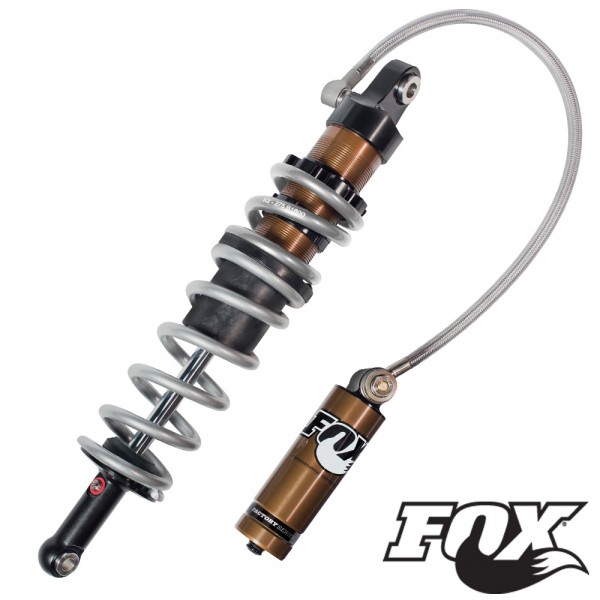 To adjust the preload:
To adjust the preload:
The next type of adjustment is compression. The compression helps prevent your suspension from bottoming out. It is the damping, and it controls the speed of the movement of the shock’s shaft into the body of the shock.
Adjusting the compression allows you to control the speed of the flow of fluid. If the fluid flows too fast, the shock might be too stiff. If it is too slow, the shocks can compress and move rather quickly, which can cause them to bottom out.
So, how do you adjust the compression damping? Usually, there will be an adjustment knob on the body of the shock. It might also be located on the shock reservoir.
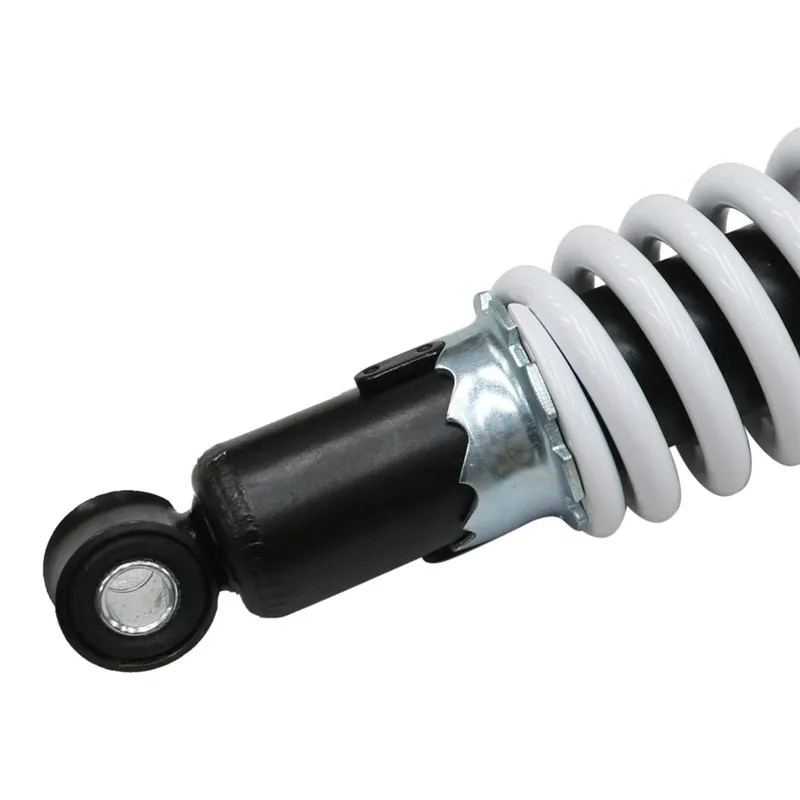
There might be several adjustment settings. Usually, the shocks will have a needle valve system and not orifices. When adjusting a shock with a needle valve, you adjust the oil flow, which affects the compression.
I will say that for most shocks, even aftermarket shocks, there is no high-speed compression adjustment. As such, the adjustments you make to the compression damping will matter for small bumps and ruts, not large bumps.
What kind of adjustment is better? I would recommend keeping the oil flow nice and not too slow. Otherwise, the shock can bottom out.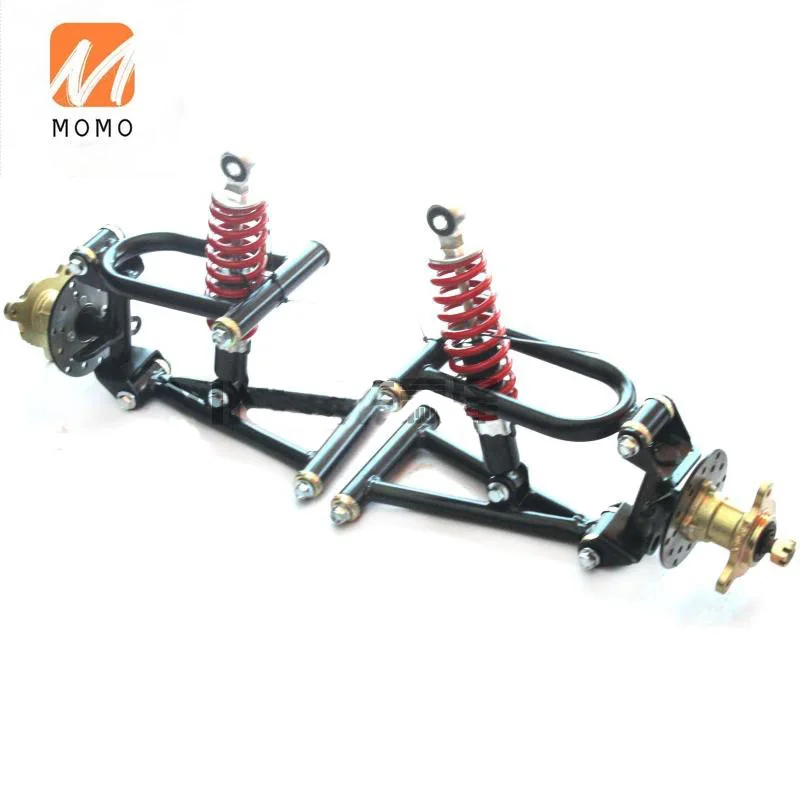 The tires will stay connected to the ground.
The tires will stay connected to the ground.
It will be easier to brake. You do not want to make it too soft. You also do not want to make it too swift. You can adjust the compression based on the track or trailing you are driving on.
Finally, I will discuss adjusting the rebound. Remember, the point of the springs is to make sure your shocks rebound back into their original positions after compressing when hitting bumps or ruts. They can rebound quickly, or they can rebound slowly. That is what this adjustment is for.
If the shocks do not rebound quickly enough, and you keep hitting more bumps and ruts, they will have to compress again. However, to ensure that your suspension is working properly, it needs to compress and rebound after reaching a bump.
If it is not doing that, it will have lost all of its compression travel. It will not work properly, and you may feel your ATV moving quickly from side to side. That is not a lot of fun.

Either way, look for it on the rear shocks of your ATV. Your stock front shocks will probably not have this adjustment possibility, but if it is a second hand ATV with aftermarket front shocks installed, you may very well find this adjustment option on the front shocks.
I know that what I wrote here might seem confusing if you do not know much about suspensions and ATV mechanics.
That is why I am linking the following video, which should help you understand the basics of ATV suspension tuning:
Here is a video that explains the preload very well:
The best way to lower your ATV’s suspension is to buy custom shocks. However, you can adjust the ride height of your shocks as well by adjusting the preload. As mentioned earlier, if you raise the preload and have stiffer shocks, you will have a slightly higher ride height. If you want to lower your ATV suspension, lower the preload pressure.
As for softening the ATV suspension, that is also done by lowering the preload.
Before I close out this article, I will cover some of the most common ATV suspension terms you should know about. Once you know these terms, you will figure out how to work your ATV suspension.
The ride height refers to how high the seat of the ATV is.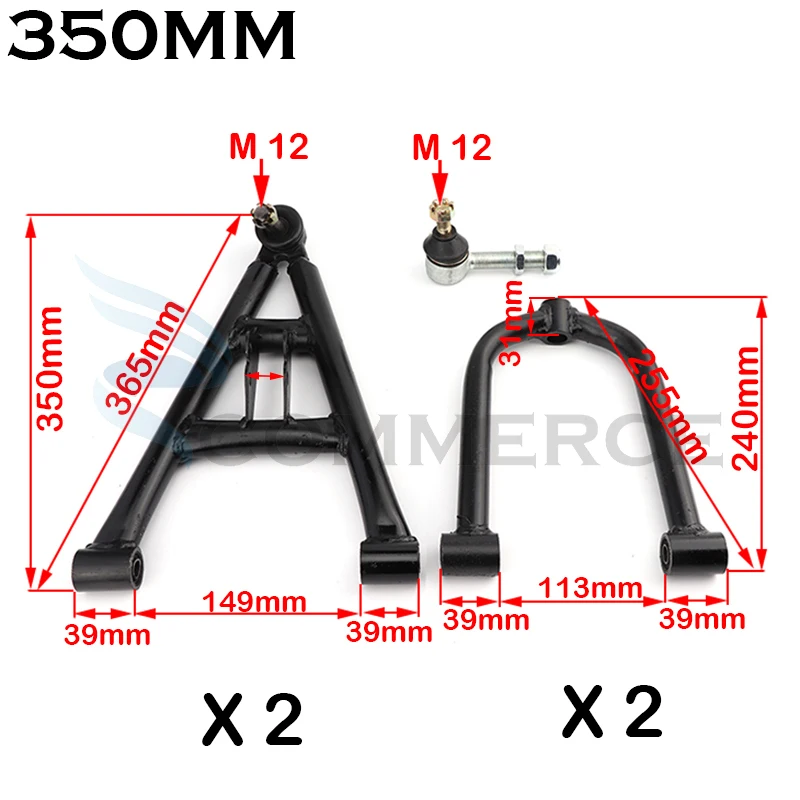 This height is measured at the time the rider is on the vehicle. That is why it is referred to as ride height.
This height is measured at the time the rider is on the vehicle. That is why it is referred to as ride height.
Camber refers to the tilt of your tires. If they are tilted in at the top and tilted out at the bottom, they have negative camber. If they are tilted out at the top and in and the bottom, they have positive camber. There are different levels of positive and negative camber. Why would you want a negative camber?
Tilting them out at the bottom will help increase traction when going through corners. More of the contact patch will have contact with the ground. If they have a positive camber and are tilted in at the bottom, you will lose traction on corners.
Free sag refers to how much travel the suspension has, considering only its weight and not the rider’s weight. That is how much the suspension sags under its weight. The weight of the ATV will lead to some level of compression and sag. Keep in mind that the front wheels’ free sag might not be the same as the back shocks’ free sag.
The front shocks are located on the front wheels and help them resist compression.
On the other hand, the rear shocks work on the back wheels and help them resist compression.
As opposed to free sag, rider sag refers to the amount of suspension travel used when the rider is sitting in the driver’s seat. Remember, this is not the total suspension travel that the shocks are capable of. Usually, it will be around a third or less of the total possible travel. The suspension will sag under the weight of the rider. It means that there is less travel that can be used when driving over bumps and rocks.
I mentioned bottoming out a few times. You want to avoid bottoming out when possible. Bottoming out refers to when the shock is completely compressed. When this happens, your body can feel it rather harshly, and you can get pain. By adjusting the compression to make it move slower, you can prevent the shocks from compressing completely and bottoming out.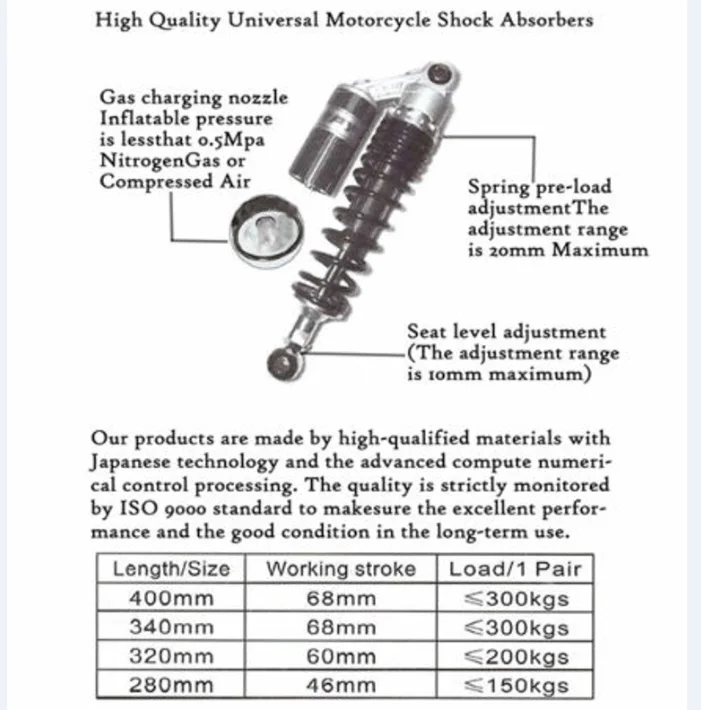
I mentioned that you could adjust the rebound. If it rebounds too quickly and jumps up and down, it is bucking. In other words, the shocks are going up and down quickly to the point of being out of control.
At this point, I hope you understand a little more about what the shocks do and what their main components do. You should also have at least some understanding of the main kinds of adjustments you can make and why you might want to do them. The main adjustments to make are the preload and rebound adjustments.
Sharing is caring!
Adjusting the shocks on your ride is one of the easiest and most effective ways of perfecting how your ATV feels to ride.
The proper suspension adjustment can smoothen out every bump in the trail while giving you better traction and control when you need it. It’s fun to try out different suspension adjustments, and it takes almost no time at all.
It’s fun to try out different suspension adjustments, and it takes almost no time at all.
First, we need an idea of how the suspension works in your ATV.
The suspension system of your ATV is made up of several shocks. Each of these shocks is made up of two main parts, the spring and the shock absorber (also known as the dampener). As we’ll see, these two parts work against each other to give you the perfect ride based on the adjustments you make.
Hit a bump on the road, and the spring will compress, so you don’t feel it. The spring tension then drops the tire back down immediately, so you retain traction. Great! But if we only had springs, our ATVs would be bouncing around all over the place like a grasshopper. It’d be impossible to control.
The shock absorber acts as the counter to the spring. It has an oil-filled tube with a piston that absorbs much of the bounce of the spring, like when you push a spoon into a jar of thick peanut butter. Some of the force is absorbed, and the bounce of the spring is smoothened out.
Some of the force is absorbed, and the bounce of the spring is smoothened out.
When the spring and shock absorber are perfectly adjusted to work against each other, you’ll get a smooth ride that cancels out all the little bumps in the road but also handles high-stress situations, like going over a big jump, with aplomb. If you feel the shocks on your ATV are too soft or hard, you can adjust them.
ATV are waterproof & breathable riding gear
Find out the items that suit your needs
There are two main measurements when it comes to ATV shocks. The first is compression. This is how much the spring will compress. Loose compression will feel bouncy, and when you go over major jumps, the springs will completely bottom out, making for a shudder and potential injury.
When the compression is too stiff, you’ll feel every bump in the road. This not only feels uncomfortable, but it can also make the ATV difficult to ride as you’re constantly fighting the shocks from the terrain.
When you adjust ATV shocks, you mainly adjust the compression.
The other important measurement in shocks is the rebound. Not every ATV suspension will allow you to adjust the rebound. Where compression is how much your springs will compress, the rebound is how fast the spring will decompress.
Stiff rebound means your tires won’t quickly return to the ground quickly enough, so you’ll lose traction. Loose rebound will return the tires to the ground too quickly, giving you a bucking motion that can make recovering from jumps feel jittery.
Image from Jonathan Cedotal YouTube Channel
How you decide to adjust your ATV suspension will depend on personal preference and how aggressive you ride. If you’re constantly going over heavy jumps, you might choose to set a higher compression, for example so that the suspension won’t bottom out.
Exactly how to adjust the suspension on your ATV comes down to the make and model. Most ATVs these days use clickers, which is essentially a nut, screw, or knob at the top of the suspension. All you need to do is adjust the clicker, and the suspension will adjust accordingly. Older models have no clicker, and you need to adjust the shock’s threaded collar.
Most ATVs these days use clickers, which is essentially a nut, screw, or knob at the top of the suspension. All you need to do is adjust the clicker, and the suspension will adjust accordingly. Older models have no clicker, and you need to adjust the shock’s threaded collar.
More advanced suspensions may have two clickers. These are known as high-speed clickers and low-speed clickers. As you might expect, the high-speed clickers adjust how much compression you’ll get at big hits like a jump, and the low-speed clicker is for adjusting the compression at low speeds. Testing the ATV on big jumps and a section of bumps will give you an idea of whether you want to loosen or tighten these compression settings.
In some cases, there will also be a rebound adjuster located at the bottom of the shocks. You can test the rebound of your vehicle over a small jump to get an idea of whether your current rebound is too loose or tight.
HIT
ENDURO LIGHT Graphite
the most durable
458 EUR
HIT
ENDURO Camogrey
the most durable
657 EUR
ENDURO Graphite
the most durable
279 EUR
HIT
ENDURO Graphite
the most durable
657 EUR
-28%
AQUAMASTER-ZIP LIGHT Camogrey
with central zipper
598 EUR
430. 40 EUR
40 EUR
HIT
ENDURO LIGHT Camogrey
the most durable
458 EUR
-12%
AQUAMASTER LIGHT Red
reliability & comfort
438 EUR
386.20 EUR
NEODRY Black
17 EUR
11.90 EUR
ENDURO Camogrey
the most durable
279 EUR
AQUAMASTER Blue
reliability & comfort
647 EUR
-20%
HIT
AQUAMASTER Red
reliability & comfort
259 EUR
207.20 EUR
-40%
HIT
AQUAMASTER Orange
reliability & comfort
259 EUR
155.40 EUR
AQUAMASTER Red
reliability & comfort
677 EUR
BELT
9 EUR
ENDURO BF Camogrey
bootfoot waders
528 EUR
ALL SEASON Black
62 EUR
ENDURO BF Camogrey
bootfoot waders
329 EUR
ENDURO Grey
29 EUR
26. 10 EUR
10 EUR
MUDWAY Graphite
179 EUR
MUDWAY Camogrey
179 EUR
Explore all
The suspension is considered to be one of the most important functional components of motorcycle equipment, since it is it that is responsible for the rider's comfort in the process of movement, and also provides a soft passage through problem areas of the terrain. The sale of ATVs implies a special attitude to this unit and detailed advice on the procedure for its adjustment and maintenance.
There are dependent and independent types of suspension. The second type is most often found among modern ATV models. Each motorist can adjust it in accordance with his own preferences, as well as operating conditions.
Among the advantages of ATV dependent suspension it is worth noting:

Such attractive performance of this suspension is due to the extreme simplicity of its design.
Regardless of the type of ATV suspension, there are some regularities in its structure. There are front and rear suspension types. In order for 125cc ATVs to boast a high level of ride comfort, the front suspension is usually made independent. Often it is supplemented with elements such as a pair of wishbones and telescopic shock absorbers. As for the rear suspension, it can be dependent, independent or semi-independent, and can also be equipped with pendulums and shock absorption devices.
Suspension of any ATV is a set of spare parts, assemblies and assemblies located between the motor vehicle body and the track. It consists of the following components:

ATV suspension also performs many important functions, namely:
Based on this, the suspension, despite the relative simplicity of its device, plays a significant role in the design of any vehicle.
If your vehicle's suspension is not working properly or has failed, you may need to replace some of its components with new ones.
The following ATV suspension components most often fail:

To repair the suspension of an ATV without outside help, it will be enough just to find the failed elements of motorcycle equipment and replace them.
By adjusting the ATV's suspension for yourself, the rider will be able to get maximum pleasure and comfort in the process of driving. It is especially important to correctly configure this aspect in sports models of motorcycles. The fact that it is time to adjust the ATV suspension is indicated primarily by uneven tire wear, as well as the presence of problems and discomfort when driving a motorbike.
Adjust the suspension of a motor vehicle as follows:
 It is better to reduce compression in the case when slippage is observed.
It is better to reduce compression in the case when slippage is observed. Before starting to adjust the ATV's suspension, it is recommended to write down all the initial values so that if you do not like the result, you can easily return the motorcycle to its previous state.
In the absence of experience in the repair and maintenance of motorcycles, it is strongly recommended that if you find any problems with the suspension, contact the specialists at the service center. The sooner you decide to repair an ATV, the better, because driving it with a broken suspension is not only inconvenient, but also quite dangerous.
05/29/2021 1970
Have you ever read an article about ATV or Side-by-Sides and come across completely unfamiliar terminology? But what if you knew, let's say, that they are only about the thermohydraulic dissipation of kinetic energy? If this knowledge doesn’t make it easier, then it’s time to really understand the issue.
From the very first day, when you are just starting to study the chassis and suspension of your new “iron horse”, it can be easy to confuse a lot of new words and unfamiliar terms that seem to be familiar to absolutely everyone around. Moreover, knowledge (or not knowledge) of this terminology can help you improve your car (or, accordingly, achieve the opposite result). It’s worth understanding it in order to at least find the right suspension settings for your ATV or ATV.
So, in this article you will find a brief "dictionary" of key terms. Armed with new knowledge, you can unleash the true potential of your machines.
First, let's try to get acquainted with the types of settings and their names.
Spring preload: is the pressure setting (or preload) on the shock spring. A large number of basic shock absorbers have only this setting function. This adjustment is made using a female threaded ring on the shock body and a locking ring, which gives more adjustment possibilities, or a five-sided ring, the settings of which are limited to these five levels. Increasing the pressure makes the ride harder and increases the vehicle's ground clearance. Loosening the preload makes for a smoother ride, but can cause the car to hit the bottom of the track.
Increasing the pressure makes the ride harder and increases the vehicle's ground clearance. Loosening the preload makes for a smoother ride, but can cause the car to hit the bottom of the track.
This photo of a FOX shock shows how to preload the spring using the female ring on the top of the spring (turn clockwise).
Compression adjustment: this setting controls the movement of the rod in the shock body. There are two types of compression: slow and fast. There are two types of compression adjuster: adjusting knob or slotted screw head. These regulators control the flow of fluid into the damper. If the shocks compress too fast, you need to slow down the flow rate, if they are too stiff, you can speed it up. With strong compression resistance, breakdowns after a jump are prevented, the car behaves better when passing large irregularities. As for low resistance, the situation is reversed, the car will perform well when passing small bumps in the track, but strong jumps can cause problems. This setting is especially relevant for ATVs and ATVs, with it you can control the suspension when passing uneven terrain, make jumps.
This setting is especially relevant for ATVs and ATVs, with it you can control the suspension when passing uneven terrain, make jumps.
At this point, the driver can only hope that the shock settings are tight enough.
Rebound: this is the speed with which, after compression, the rod returns back to its original state - the one that was before compression. This setting controls the speed of this bounce. This will give you more control over your ATV or Side-by-Side as this setting ensures that the wheel is always in contact with the ground. Adjustment is carried out using a slotted screw or ring, which is twisted at the base of the shock absorber.
After the situation with the settings has become more or less clear, you can proceed to the study of the most common terms.
ground clearance: is the suspension height measured with a fully equipped driver and his equipment in the car.
Sag under weight (cars): this term defines the sagging of the suspension under the own weight of the car, without a driver.
Even the ATV's own weight (without rider) compresses the suspension slightly. This is called weight sagging.
Sag or Driver Weight Sag: this is the data on the full suspension travel when a fully equipped rider sits in/on the vehicle in the starting position. Usually, this value is 30% of the full suspension travel.
Pogoing: this term is used when the spring reverses too quickly due to certain settings and the shock absorbers, most often the rear ones, get the car's rear suspension out of control.
There are many varieties of shock absorbers - for every taste and budget.
Standard fixed: these are gas-filled shock absorbers that can be seen in budget models of ATVs. They are not regulated.
They are not regulated.
With spring preload: such a shock absorber can be found in sports cars for beginners or utility ATVs. The preload is usually adjusted by tightening the adjusting nut or loosening it.
Compression adjustable: often found in sports cars, such a shock absorber is most often equipped with a spring preload function. Such a shock absorber can be produced both with a nitrogen tank located on the side and without it.
You can see the pressure adjustment knob located on top of the King's piggyback receiver.
Compression and rebound adjustable: this type of damper will be fitted with a separately attached piggyback receiver or nitrogen tank. They will also feature preload rings, compression and rebound adjustment knobs. This shock will give the rider maximum customization options.
Pneumatic dampers: Air springs have been on the market for a long time, and the FOX brand has become one of the leaders in the industry.